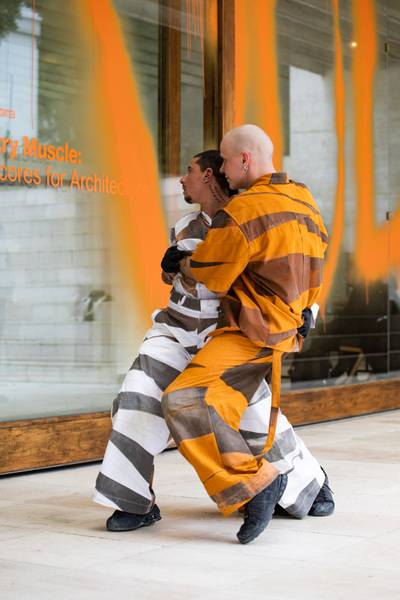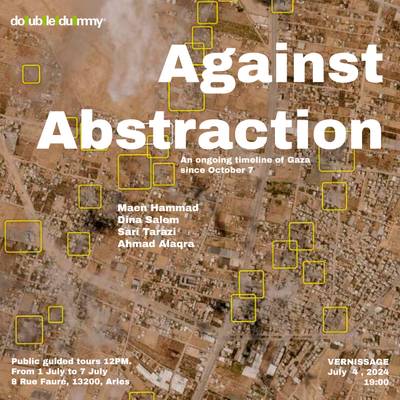

Still image from The Woodcutter Story, photo by Tero Ahonen
Taneli Viitahuhta (b. 1978), is a Helsinki-based writer, translator, and saxophone worker. Publications include Free Jazz Communism, together with Sezgin Boynik (Rab-Rab, 2020), Walter Benjamin’s Keskuspuisto, translated together with Eetu Viren (Tutkijaliitto, 2014), as well as starting from 2021 translations and writings with the text collective Komeetta (komeetta.org), including translation of “Idioms and Idiots” by Ray Brassier, Jean-Luc Guionnet, Mattin and Seijiro Murayama.
Mikko Myllylahti’s first feature film, The Woodcutter Story, transports the viewer to a rural Finnish village steeped in a distant past whose precise historical time remains obscure. The film opens with a disconnected scene in which the deep Kainuu forests are sold to a businessman, possibly an embodiment of Satan. The seller is an embittered bourgeois female character. This deal with the devil occurs in a wooden hideout shack situated on a hill in the middle of a deep forest. These woods are the means of livelihood for the woodcutter, the film’s main character, and thus the first scene casts a dark shadow on the story.
After the prologue, the woodcutter Pepe (Jarkko Lahti) is introduced. It is winter. He is returning home from work at a sawmill and is greeted by a surprise party. It is his birthday. All is well. The woodcutter seems to enjoy his simple life, work, and surroundings. He has the company of his friend Tuomas (Hannu-Pekka Björkman), his loving wife Kaisa (Katja Küttner), his mother (Ulla Tapaninen), and his young son, pikku-Tuomas (Iivo Tuuri). Despite the socially restricted and materially meager surroundings, the woodcutter has a sunny disposition, always looking at the bright side of life. What befalls the woodcutter is a string of incredible and even fantastic events, robbing him of things he holds dear. Pepe’s innocence, calmness, and confidence are tested by natural and unnatural death, family disintegration, murder, lost livelihood, and deteriorating working conditions.
In his director’s statement, Myllylahti says that he wanted to experiment with the idea of stripping the biblical story of Job of any religious meaning. “If there is no meaning in the world, what makes a person have faith, trust, and hope?”, Myllylahti asks. The film’s central question concerns Pepe’s ability to maintain calm inner composure and whether such composure can be maintained in the first place. According to Myllylahti, calmness is a characteristic that is very Finnish – and after his own description, this is especially a feature of men from northern Finland.
This “national character” explanation must be taken with a pinch of salt. After all, isn’t the idea of someone who suffers, but does not express it, a familiar theme from art history? From Plutarch’s story of the Spartan boy, who would rather let a savage fox bite him to death without crying, than "being detected because of the weakness of spirit to gain a life to be lived in disgrace"1 to Lessing’s dispute with Winckelmann over the meaning of the representation of pain in the antique statue of Laocoon and his sons, calmness in (near-)death is a well-known topic in the arts.2 In modern times, a non-Christian interpretation of Job’s suffering is put forward in Mary Karr’s autobiographical novel The Liars’ Club:
I think about the story of Job I heard in Carol Sharp’s Sunday school. How he sort of learned to lean into feeling hurt at the end, the way you might lean into a heavy wind that almost winds up supporting you after a while. People can get behind pain that way, if they think it derives from powers larger than themselves.3
My point of view in this review revolves around the interpretation of the two-fold structure of The Woodcutter Story. Underneath the film’s exterior of entertaining black comedy exists a poetic-existential interior. My actual question in this review concerns the relationship between these two layers. If the “deep” concern of the film is the existential question of whether senseless suffering could generate a sense of meaning, it cannot be answered directly without a recourse to religious register. In that case, no authoritative answer can be given except by appeal to the “superficial” level of the actual events and their logic.
Myllylahti’s previous work as a screenwriter to Juho Kuosmanen’s successful The Happiest Day in the Life of Olli Mäki (2016) hints at his fascination with big themes such as expectations of masculinity, the difference between town and countryside, and the specificity of the Nordic psyche. In The Woodcutter Story, criticism of historical and cinematic narratives as purely linear and continuous is evident. Firstly, the film has no exact historical reference point. It borrows interiors, styles, social manners, clothing, and technology, from a range of recent history. There is possibly one mobile phone in the movie, most people tune into radio programs and television shows, and interactions happen face-to-face. The film’s world is from the pre-Internet era. It inhabits its own dream time. It brings to screen something that has the temporality of having recently passed but is still retained in memory. This is a bold move, and it saves the film from petty squabbles over whether it is anachronistic or not.
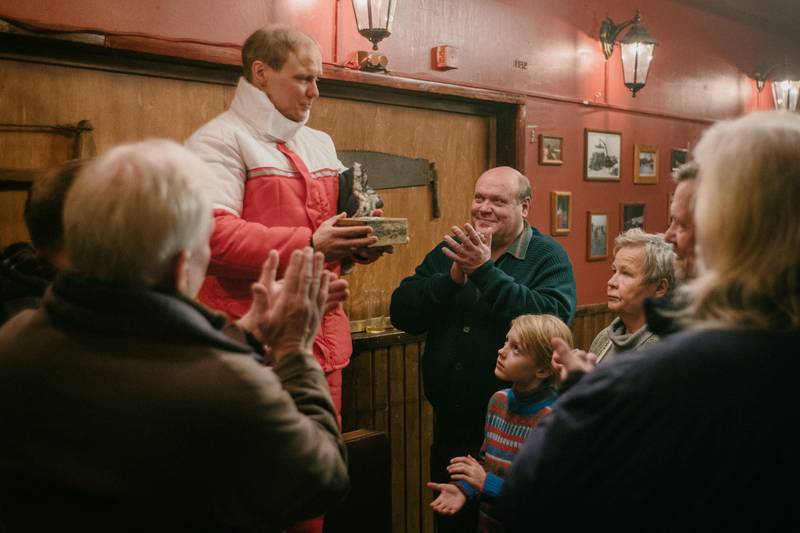

Still image from The Woodcutter Story, photo by Tero Ahonen
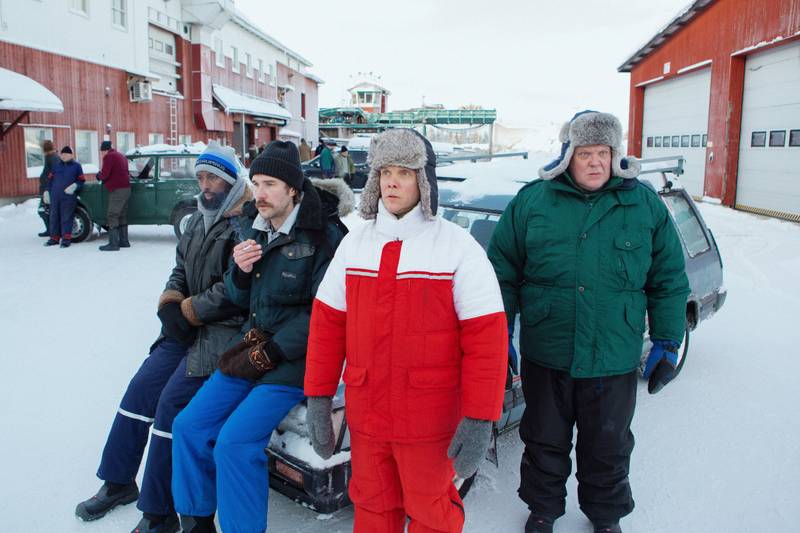

Still image from The Woodcutter Story, photo by Tero Ahonen
Freedom from history frees the film from obvious meta-narrative anchors and easy moral conclusions. For example, if the film had been clearly set in Finland in the early 1990s, the viewers could have interpreted the misfortunes of the woodcutter as having a subtext of economic depression and could have given themselves the comforting afterthought that after a while, things might look better for him. But the surreal chain of fearful events that the woodcutter endures has no room for such release of tension because his torments have no unequivocal economic or social meta-narrative.
This brings attention to the word “story” in the title. The paradox of the film is the following. If there is no meaning in the world of the woodcutter except for his endurance of arbitrary, even cosmic malevolence, can the woodcutter claim to have a story? Withstanding disaster without losing optimism is commendable, but if no appeasement of the forces of destiny can take place in the secular world of the woodcutter, with no political alternative open to challenge the economic rationale behind the disasters, what else is there to do for the woodcutter except to go into his grave, ruined but quietly smiling? Could this be a story?
This review is constructed in four parts. After setting my aims in this overview, I turn to philosophical theories of modernity and non-contemporaneity. Having demarcated the mythological and de-mythological pull that are both present in the film, I move on to the analysis of what I take to be the central poetic vehicle of the film: music and how the songs in the film negotiate this duality. In the end, I offer some points in conclusion.
The Woodcutter Story is riddled with ambiguous symbolism. To catch up with the film’s logic, the viewer might do well to hearken back to Ernst Bloch’s idea of non-contemporaneity, developed in the 1930s. In The Heritage of Our Times, Bloch points out that the present time is not the same for everyone:
Not all people exist in the same Now. They do so only externally, through the fact that they can be seen today. But they are thereby not yet living at the same time with the others. They rather carry an earlier element with them; this interferes.4
This description suits The Woodcutter Story. It is not only the case that we are invited to take part in a filmic time that is different from ours, but the time of the film itself is uneven and heavy with non-contemporary elements.
Bloch’s notion of non-contemporaneity pushes back against the German National Socialists. He saw that the Nazis were attempting to manipulate the idea of “bygone times” and set their racial imagination of belonging, “blood and soil,” at its center. Bloch claims that the different times that exist in the present—the non-contemporaneity of modernity—can be abused in such a way. But non-contemporaneity is also a powerful source of egalitarian and archaic-revolutionary energies. According to Bloch, there is a rebellious undercurrent to non-contemporaneity.
Bloch’s “paradox of the rationalized world,” according to Anson Rabibach, is that communal belief systems of the past have become eroded and displaced, while the powerful forces that they gave expression to have come to appear as destructive as such by capitalist technological rationality. Against Herbert Marcuse’s Marxist reading that equates Nazi mythology with deprivation of history, Rabinbach points out that for Bloch, the “romanticized image of the German Volk” is not a pure fabrication but includes a claim to unclaimed heritage. This heritage would need to be reclaimed for the struggle against fascism to be victorious.5
One way to come into contact with such forces is, of course, through art. The medium of cinema has been, for the last century, not only one of the ways to present these non-synchronous energies but perhaps the definitive one. Observing the young employees of Berlin and Frankfurt in the final years of the Weimar Republic, Siegfried Kracauer wrote about the “salaried masses” of their trips to movie theaters and cabarets during the week and to the artificial lakes during the weekend. Kracauer notes that for the salaried masses, cinema is a dreamland, not only of other distant places and historical times but also of bodies and sensibilities that transcend the present.6
The difference between Bloch’s perspective in the 1930s and our concerns is precisely how the radical utopian forces of non-contemporaneity come to square with the political. Alberto Toscano writes in “Notes on Late Fascism” (2017) that at the moment, the political figure that represents a longing for a time gone by is not “non-synchronous” in Bloch’s terms (reverberating with ancient energies), but the opposite “synchronous,” idealizing the safety and anonymity of post-war modernity, which is falsely seen as a uniform and symmetrical process.7 This plays out in the current right-wing nostalgia for the nuclear family. The gendered and racialized white “industrial worker-citizen” now “reappears […] in the guise of the ‘forgotten men’” as a figure of nostalgic longing.8
The woodcutter can be seen as an attempt to bridge the gap between these modulations of nostalgia, on the one hand for non-contemporaneity and, on the other, for contemporaneity. In his silent demeanor, his one foot is that of the “non-synchronous hero”, a sage steeped in archaic wisdom (the obverse of the exploited and disenfranchised peasantry). His other foot, however, belongs to what could be called a “synchronous (anti-)hero,” with a yearning for “modernity” (the obverse of the deprived working class) as a representation of manual workers in our current age).9
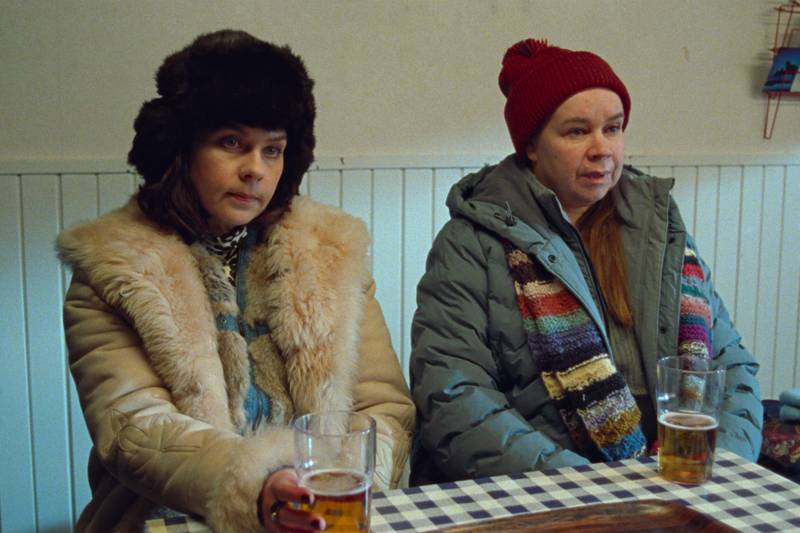

Still image from The Woodcutter Story, photo by Tero Ahonen
The latter figure has frequently been gauged in the gestalt of a coal miner, which is typical and symptomatic of the environmental crisis. Here the story of Pepe is insightful as he moves from the “rooted” profession of lumberjack and family man to the “alienated” day laborer workforce of the new local mining company. Transformative energies start to move around him. However, in the film, the attempts to change the surroundings are particularly misplaced; they only lead to destruction. Pepe’s mate Tuomas finds out that his wife is having an affair, which spurs him to action, but only to doomed, non-discursive acts of violence that lead to death. Pepe’s coworker Pauli (Tomi Alatalo) is an intellectual seeker interested in the world of ideas, including revolution. Still, he remains susceptible to manipulation, and this also leads him to use extreme violence. In The Woodcutter Story, the men who act are destroyed by their actions. Enduring the painful stages of transformation without action is the woodcutter’s claim to heroism. Yet, the question remains: can he walk with his two narrative legs, one of non-contemporaneity and the other of contemporaneity?
The Woodcutter Story is libidinally loaded, even if there is virtually no sex, romance, or desire in the film. The actions infused with emotion or breaking the veneer of custom are mostly fatal, and in contrast, Pepe’s emotions are limited to concern for others and formal optimism. Only in the film’s three scenes with songs is this duality breached. They are the true affective centers of the movie, all well-known Finnish tunes from the past decades, and the music is accordingly diegetic, belonging to the world of the film (with one partial but important exception).
The first of the three songs plays in a jukebox, accompanied by a playful choreography performed by Pepe’s wife and her friend. This song, from the pen of Kaj Chydenius, is “Huomenna on paremmin” (1970):
Jo huomenna on paremmin siis jaksa siihen asti
Ja rakkaudesta puhu hiljaa puhu varovasti
Tomorrow will be better so keep up until then
And talk about love only quietly and cautiously10
The second song is heard after Pepe’s wife and her friend decide to move to town. By sheer luck, Pepe’s son remains with him, and together they listen to a transistor radio, where the children’s song “Lounatuulen Laulu” is playing. This song is also composed by Chydenius in 1970, and the lyrics are by the poet Kaarina Helakisa.
Lounatuuli tuo pienen laulun
Kenelle tuuli kertoo sen?
Niille joilla on nauravat korvat
Ja joilla silmät on lapsien
Selässä lounatuulen ajaa
Viiriäiset ja varpuset
Kun tuuli ylittää tuhat rajaa
Sylissään hilpeät sävelet
The southwest wind brings a little song
To whom does the wind tell it?
To those with laughing ears
And those with the eyes of children
On the back of the southwest wind
Come quails and sparrows too
When the wind crosses a thousand borders
Carrying merry tunes
These songs are routinely associated with the Finnish Leftist political song movement of the 1970s, Chydenius, its most distinguished composer. In the film trailer, “Lounatuulen Laulu” starts to play when the woodcutter tells his profession, and the song fades away when the montage of his final disarray is brought into focus.
The final and most important track concerns Pepe’s antagonist, Jaakko, a charismatic clairvoyant and ringleader of an apparent cult, the actions of which are never actually presented. In a performance at the communal village hall, Jaakko presumably makes spiritual contact with the woodcutter’s dead mother and tries to manipulate his son into becoming his follower as the cult leader. When Pepe tries to persuade his son to leave this weird man, Jaakko tells about his sexually charged, graphic suicide fantasy. The polarity between these men is staged at the libidinal level. Even more than Tuomas and Pauli, who remain unconscious of their desires, Jaakko represents and embraces the ultimate transgression. He wishes to reach beyond the border of life and death, a border that Pepe respects. Thus, their battle for pikku-Tuomas has high stakes in the patriarchal ideas inherent to the film, even the ultimate ones. Will the child “belong” to the man who does not act or to the one whose actions clearly go against the laws of logic and order?
Jaakko’s song is “Ikävä” (“Longing”), recorded by Pave Maijanen in 1990. In contrast to the previous songs, which convey feelings of hope and precarious trust, this ballad paints them as naïvely optimistic. Indulging in emotions of nostalgia and disenchantment, “Ikävä” is sung by the clairvoyant. Still, it quickly turns into a non-diegetic piece of music, with a full band backing the singer. The lyrics are heavily centered around the emotion that the song is named after.
Onko sulla joskus ikävä ollut jotain jota ehkä ei olekaan
Onko sulle koskaan ikävä tullut vaikket tiedä mitä edes kaipaatkaan
Niin kuin pieni satu johon lapsena uskoit menettänyt hohteen on kokonaan
Tai niin kuin kaunis maisema jota ei koskaan ole edes ollut olemassakaan
Have you ever longed for something that might not even exist
Have you ever missed something without even knowing what it is
Like a little fairy tale you believed in as a child that has completely lost its glow
Or like a beautiful landscape that has never even existed in the first place
Soon after delivering the song, in a swift turn of events, Jaakko finds out that Pepe’s son is not interested in the cult and has only had a “childish crush” with a local girl. Soon after Jaakko is killed, Pauli loses his spiritual faith, as projected in his psychic, and murders him. Pepe saves pikku-Tuomas but remains nonplussed.
Significantly, “Ikävä” breaks ever so slightly with the diegetic pattern that has been The Woodcutter Story’s bulwark against melodrama up until this point. Here, the filmic device is turned into an apparatus of spectacle. Unlike the scenes where supernatural events take place (for example, a talking fish, a bolt of lightning hovering in a room, a burning car driving by itself), Jaakko’s song is invested with filmic powers that imply an actual force to break the walls that differentiate “me” and “you”. The lyrics of the song execute this transference of feeling in a precise fashion by switching pronouns in otherwise symmetrical lines:
Minä olen kauan jo sinua kaivannut, sinua ei varmasti olekaan
Sinä olet kauan jo minua kaivannut, minua ei varmasti olekaan
I've longed for you for a long time, surely you do not exist
You've longed for me for a long time, surely I do not exist
The song touches the cinema audience watching The Woodcutter Story in a similar way that Jaakko’s performance in the film touches the audience. It is mesmerizing, flowing with energy and will. However, the film’s universe affords no meta-narrative position that would make it possible to actually have such a magical turn: Jaakko cannot prevent the destructive train of events. His longing for wholeness is betrayed by the lyrics themselves. Jaakko “does not exist”; he is a prototype of a con man, only chasing the loose money of the villagers. Con man is short for confident man, and it is precisely their naive confidence that leads people to believe he possesses psychic abilities. Pepe only has mute confidence in himself and is not fooled by Jaakko. When Jaakko is killed, and the struggle over a child is settled in favor of Pepe, he carries the boy off in a fatherly fashion on his shoulders. Still, in the end, he has nowhere to go except deeper into his worsening hallucinations.
The Woodcutter Story is a bold film. Besides having good production values, aesthetic consistency, and refreshing dips into the otherworldly, it wants to say something existential about our world. Bygone times return because they have not been mastered, while the mechanisms of social hypnotism usher in this lack of mastery. The woodcutter will not fall for such schemes, but neither can he live on without being saved by a deus ex machina to resolve the entanglements of the plot. Luckily, such a device is not provided by the script. The ending is left open.
Mastery over the past would mean resisting those rhetorical devices that turn longing for either a non-synchronous or synchronous past into a master narrative. The social and psychic economy of The Woodcutter Story’s filmic universe oscillates between these two forms of resistance, and longing for something else traces the outline of this fluctuation. Surely, the vision of not having an existence is frightful, but this is not Pepe’s concern, for he clearly has respect for all of his material underpinnings. Perhaps, if we watched the film backward, arriving last at the very first scene, we would have a better vision of what the selling off of the land means. Then we might better perceive why even those who can resist false action and false narratives, like the woodcutter, find themselves unable to speak and move when the time is ripe because they can never decide if the time is ready or not. This is what it means to live in a present that is full of ghosts from yesteryear.


